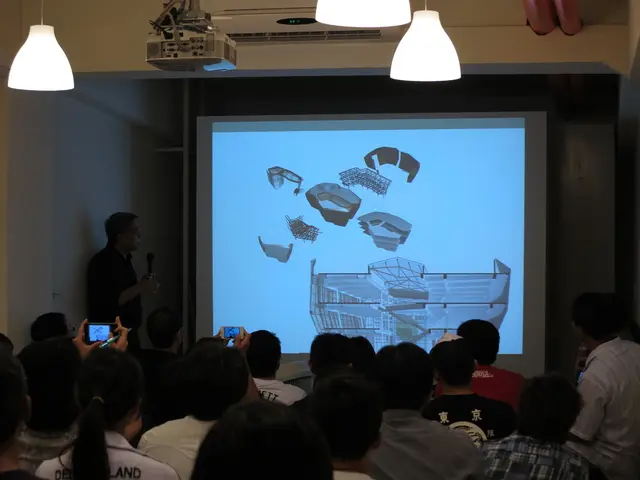Nuclear Development Breakthrough: China Unveils First Nuclear Reactor Designed to Avoid Catastrophic Meltdowns
Nuclear energy has long been a debate, promising low-carbon power but burdened with risks like meltdowns, as evident in catastrophes like Chernobyl and Fukushima. Safety has always been a primary concern, with traditional reactors often relying on active cooling systems that can fail during power outages, leading to disasters. Enter China's HTR-PM reactor, claimed to be the first commercial-scale reactor that's meltdown-proof, aiming to quell public fears and boost nuclear safety.
China's High-Temperature Gas-Cooled Reactor Pebble-Bed Module (HTR-PM) situated at Shidao Bay Nuclear Power Plant in Shandong Province claims to eliminate meltdown risks. It employs helium gas as a coolant and graphite as a moderator, with its fuel being spherical pebbles containing thousands of TRISO particles. In July 2024, tests revealed the reactor could cool naturally without intervention, stabilizing temperatures within 35 hours, even with a total power loss.
This sensor-less cooling demonstration marked a big win for the nuclear industry, potentially paving the way for broader acceptance and integration into global energy mixes. However, some experts have raised concerns about potential fission product release in accidents due to the lack of a high-pressure containment structure. While the design shows promise, ongoing research and monitoring are crucial to address these concerns.
The HTR-PM operates at high temperatures, with coolant outlet temperatures reaching around 900°C, enabling efficient electricity generation and potential use in industrial processes like hydrogen production. The reactor's pebble-bed design allows continuous refueling by adding fresh pebbles at the top and discharging spent ones at the bottom, enhancing operational flexibility.
The HTR-PM's safety hinges on several inherent features: passive cooling, high-temperature tolerance, and a negative temperature coefficient. These features make the HTR-PM a Generation IV reactor, part of an international effort to develop advanced, safer nuclear technologies. With operations beginning in December 2023, the HTR-PM represents a significant leap forward, challenging the mainstream view that nuclear power is inherently unsafe.
This breakthrough could revitalize the nuclear sector, which has faced stagnation due to safety concerns and high costs. The HTR-PM's design could lower financial risks by reducing the need for extensive safety systems, potentially making it competitive with natural gas. It also complements renewable energy by providing stable, base-load power, crucial for grids with variable wind and solar inputs.
Despite its promise, some experts have raised concerns, notably Rainer Moormann, a German nuclear safety researcher. In a 2018 paper, Moormann and colleagues warned about potential fission product release in depressurization accidents. They recommended additional safety measures and an extended startup phase for monitoring. Historical issues with pebble-bed reactors, like graphite oxidation in air exposure, also warrant attention, though modern designs aim to mitigate this.
The long-term behavior of graphite under irradiation and the management of spent fuel remain areas for further research, ensuring the reactor's safety over decades of operation. However, recent tests suggest a future where nuclear power can be both clean and safe, a balance long sought in the quest for sustainable energy solutions. Despite controversies, the HTR-PM could transform global energy landscapes, potentially playing a larger role in sustainable development.
- The innovative design of China's HTR-PM reactor, situated at Shidao Bay Nuclear Power Plant, promises to revolutionize the nuclear industry and energy mixes worldwide by addressing the long-standing issue of meltdown risks in traditional reactors.
- The HTR-PM reactor's unique cooling system eliminates the need for active cooling systems, as demonstrated by the sensor-less cooling test in July 2024, which cooled the reactor naturally within 35 hours despite total power loss.
- The HTR-PM reactor's claimed safety features, such as passive cooling, high-temperature tolerance, and a negative temperature coefficient, make it a Generation IV reactor, part of an international effort to develop safer nuclear technologies, potentially challenging the mainstream view that nuclear power is inherently unsafe.




